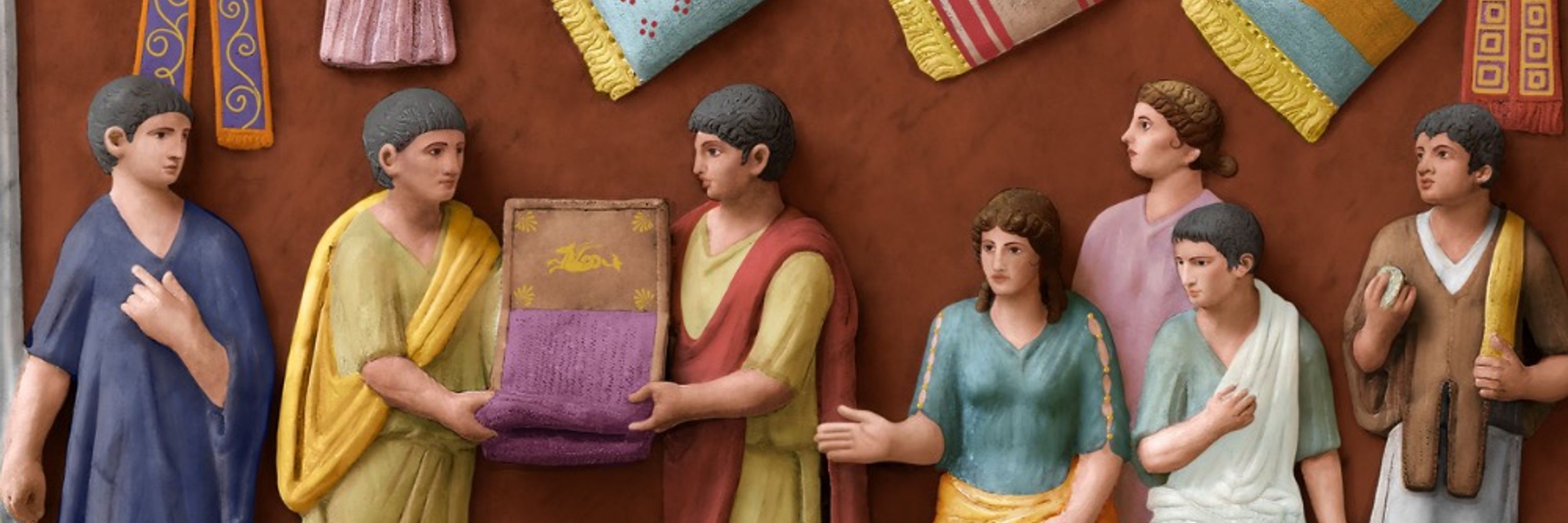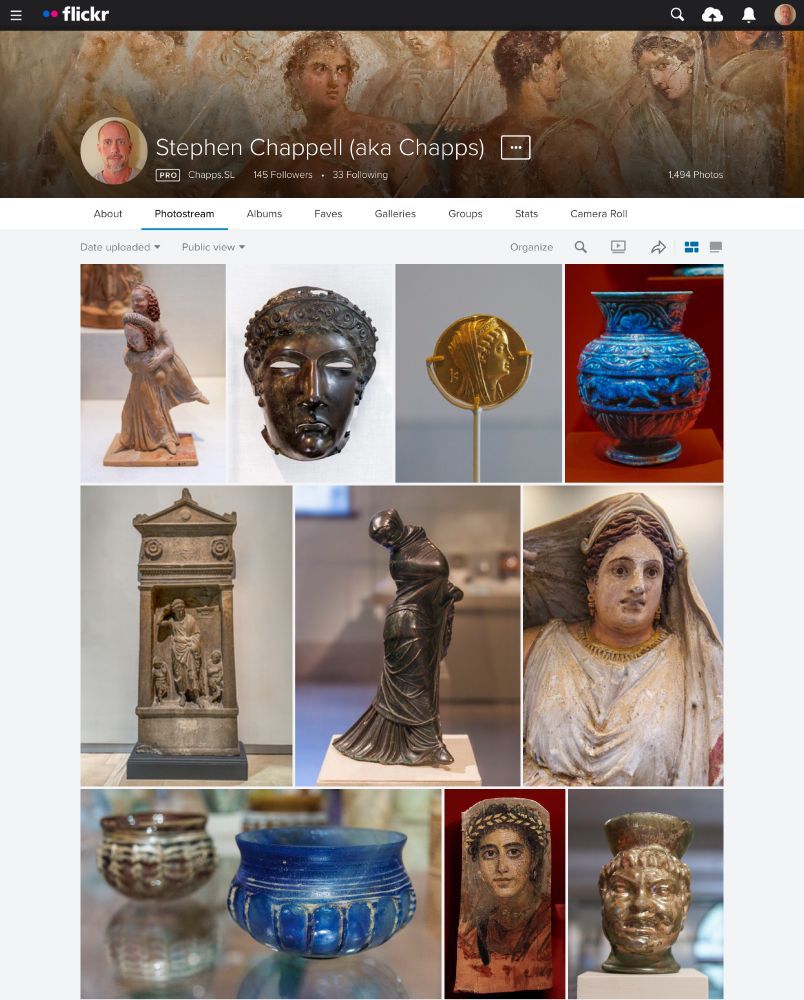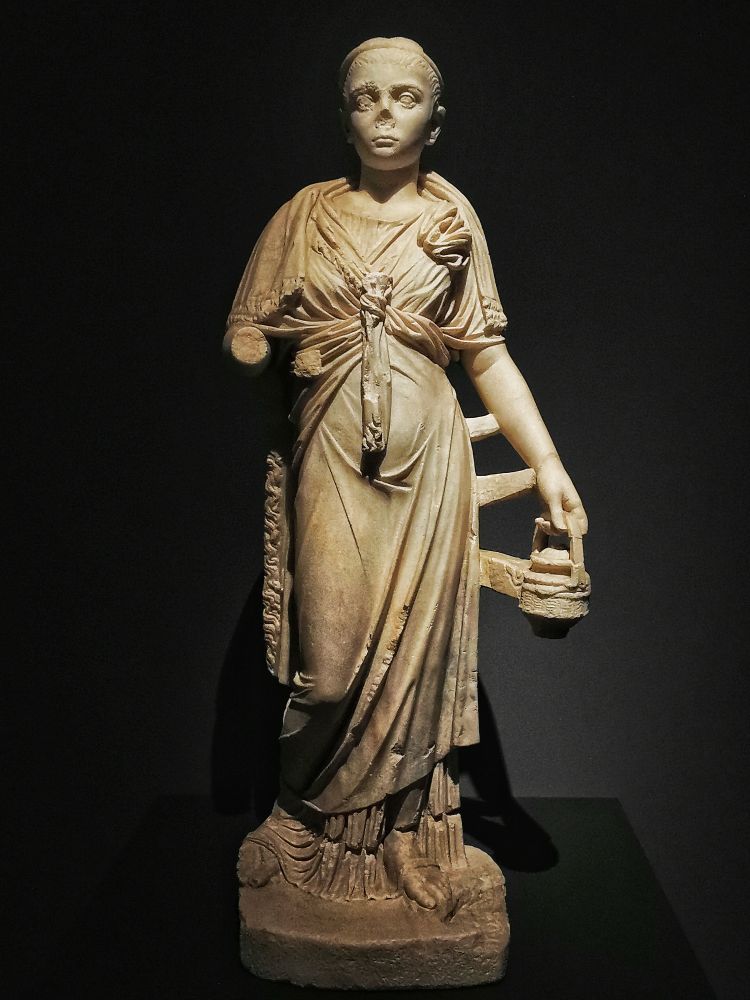
Flickr account (museum photos, mainly, free to use and high res): https://www.flickr.com/photos/125386285@N02/

I’ll eventually upload my reconstructions! 🏺
5th-4th c. BCE, Tajikistan. 📸 me

5th-4th c. BCE, Tajikistan. 📸 me
3rd c. BCE bronze three-nozzle hanging lamp with a statuette of a rural Dionysian Etruscan 'spirit'. Replicas needed! 🏺🦢 #BritishMuseum
📸 me

3rd c. BCE bronze three-nozzle hanging lamp with a statuette of a rural Dionysian Etruscan 'spirit'. Replicas needed! 🏺🦢 #BritishMuseum
📸 me
Between the 1st century BC and the 1st century AD, grasshoppers seem to have been pretty fashionable amongst the subjects carved on #intaglios.



Between the 1st century BC and the 1st century AD, grasshoppers seem to have been pretty fashionable amongst the subjects carved on #intaglios.
Striking C4 BC rhyton/drinking vessel w Actaeon metamorphosing into a stag.
In common version of myth, it's his penalty for having seen Artemis/Diana bathing naked: he's fated to be torn apart by dogs.
From Timmari Hill tombs; in archaeology museum, Matera Basilicata.

Striking C4 BC rhyton/drinking vessel w Actaeon metamorphosing into a stag.
In common version of myth, it's his penalty for having seen Artemis/Diana bathing naked: he's fated to be torn apart by dogs.
From Timmari Hill tombs; in archaeology museum, Matera Basilicata.
📷 D. v. Recklinghausen
🏺

📷 D. v. Recklinghausen
🏺

📸 me

📸 me
From Pozzuoli, mid-1st c. CE. #BritishMuseum
📸 me

From Pozzuoli, mid-1st c. CE. #BritishMuseum
📸 me
📷 Musée d'Art Classique de Mougins
#Archaeology

📷 Musée d'Art Classique de Mougins
#Archaeology
📸 me

📸 me
📸 me

📸 me
thehill.com/homenews/ap/...

thehill.com/homenews/ap/...



150-50 BCE. 📸 me
#BritishMuseum

150-50 BCE. 📸 me
#BritishMuseum
www.artic.edu/artworks/105...

www.artic.edu/artworks/105...
Image: BM (1907,0415.1). Link - britishmuseum.org/collection/o...

Image: BM (1907,0415.1). Link - britishmuseum.org/collection/o...
Greek, 520-500 BCE. 📸 me

Greek, 520-500 BCE. 📸 me
Greek, 400-350 BCE

Greek, 400-350 BCE

A Roman marble relief of a warship. Found in the necropolis of Praeneste (Latium), late 1st century BC.
The relief presumably belonged to the tomb of a Roman veteran who had served on Octavian’s side at the Battle of Actium in 31 BC.
📷 me
🏺 #archaeology

A Roman marble relief of a warship. Found in the necropolis of Praeneste (Latium), late 1st century BC.
The relief presumably belonged to the tomb of a Roman veteran who had served on Octavian’s side at the Battle of Actium in 31 BC.
📷 me
🏺 #archaeology




